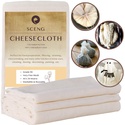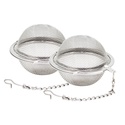It is common knowledge that most teas have a variety of health benefits. Green teas can decrease cholesterol, and black teas can raise low blood pressure. Have a sore throat or a bad day? Pour yourself a hot cup of tea.
Herbal teas have been used for centuries as home remedies to cure anything from indigestion to insomnia. Many of the plants and herbs used in these teas can be grown in your own backyard. Make sure you have a spot in your yard that gets plenty of sunlight, as these all of these herbs and plants require good drainage and lots of light.
Harvesting these herbs at the right time is important. Make sure to cut them before they flower and before it gets cold enough for a frost. Some of these plants grow quickly and can be cut many times. Many believe cutting them in the morning in cool weather is better for the taste. Do not cut too much at once, especially during the hotter months, as the plant could go into shock and die.
Once these herbs have grown to maturity, you can make tea from fresh herbs, or you can dry them. Drying them means you can store them for a longer period of time. Once you’ve cut them, wash and dry them, and then hang them upside down using string or twine for at least 24 hours, or until they are stiff. You want to make sure they are dry, otherwise, they will mold and you cannot use them for anything. Store them in an airtight container.
Using a tea ball or tightly wrapped cheesecloth, place the herbs into a cup of boiling water. Times will vary depending on the herb, and personal preference, but be sure to strain the liquid before drinking. If using dried herbs, two tablespoons should be enough for one cup of tea. If using dried herbs, double the amount.
Lemon Verbena Tea
Brew two tablespoons of these dried leaves for at least 10 minutes. This tea can boost the immune system, relieve stomach pain, and reduce joint pain.
Chamomile
This herb is ready when daisy-like flowers bloom. Use the head of the flower, not the leaves, to make the tea. It needs a lot of sun and a lot of water. This tea is commonly used to aid with sleep and anxiety.
Peppermint Tea
Peppermint does best when grown in a container, with full sun and water. Peppermint tea helps with inflammation, eases stomach pain, and it can also stimulate the appetite. The aroma of peppermint tea is said to increase alertness and memory functions.
Lavender Tea
Lavender plants thrive best when they have plenty of sun and good drainage. Use the flower buds to make this tea. It can reduce tension and alleviate headaches. It can also be used to decrease stress and is often paired with chamomile as a calming brew.
Ginger Tea
What makes this tea unique is that it is made using the root and leaves from the plant. It grows best in filtered light and makes an excellent indoor plant as long as it is kept moist. This tea can be used to treat cold and flu symptoms, digestion issues, and nausea. It is also packed full of antioxidants, which makes it the perfect tea to drink daily.
Sage Tea
Sage can have a very strong astringent flavor, so steep time for this tea varies based on preference. Sage tea can help with skin inflammation, mouth sores, and hot flashes.
Rosemary Tea
Make sure to use only the leaves of the rosemary plant when making tea. This herb is grown in many gardens and is a staple in most kitchens. The tea can be used to protect the body against heart disease, as well as improving digestion. Drinking it also helps with boosting immune health.
Due to these teas being herbal, they all contain little to no caffeine. Any of these herbs can be combined for different flavored teas. Ginger and mint are commonly infused together to soothe upset stomachs. Lavender and chamomile are a good combination to aid in restful sleep.
It is also perfectly okay to add other flavors to the teas. Adding lemon (juice and dried rind), honey, or agave will not take away from the health benefits. The taste of these teas should be enjoyable.
Cheers to your health!




